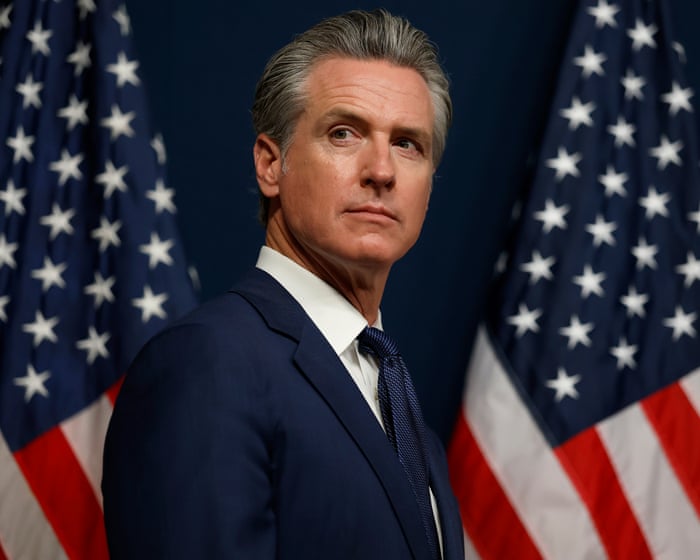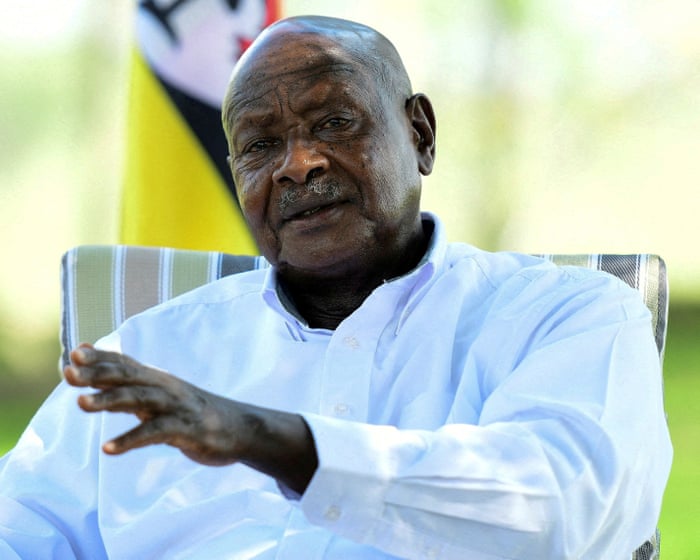In the early weeks of Donald Trump’s second term, Gavin Newsom bet on diplomacy: greeting Air Force One on the tarmac, visiting the Oval Office, and offering a podcast platform to prominent MAGA figures. But when Trump turned his focus against California, the governor dropped the pleasantries.
Through a flood of all-caps social media posts, a redistricting proposal designed to counterpunch, and a series of lawsuits challenging the new administration, Newsom isn’t just opposing Trump—he’s adopting his tactics: fight, fight, fight.
“We have to wake up and shake off our illusions as Democrats,” Newsom said on a podcast this week. “I’m tired of being weak. I’m tired of being ineffective. I’m tired of being irrelevant. It’s not enough to talk—it’s time to act.”
Newsom has stepped onto the national stage as a reinvented political fighter, ready to wield power as aggressively as his opponents. On Thursday, he signed a redistricting plan and called for a special election this fall, asking voters to redraw the state’s congressional boundaries. The goal is to give Democrats up to five additional U.S. House seats in next year’s midterm elections.
The ballot measure is a direct effort to counter Texas’s partisan gerrymandering—a move engineered at Trump’s direction to protect Republicans’ slim House majority. At the bill-signing ceremony, Newsom pointed to the president’s claim that he was “entitled” to five extra congressional seats in Texas: “That should send chills down your spine.”
Now, the California referendum turns an off-year election into a high-stakes national battle that could determine control of Congress—and set the stage for 2028. For Newsom, who is term-limited and widely seen as a presidential contender, the success or failure of this 11-week push could significantly impact his political future.
The measure gives voters in deep-blue California a chance to retaliate against Trump, who has targeted the state relentlessly since returning to the White House. But by temporarily bypassing California’s independent redistricting commission—long a source of pride in the state—Democrats are being asked to “compromise their own values,” according to Kim Nalder, a political science professor at California State University, Sacramento.
“That’s been a guiding principle for many Democrats—the whole ‘when they go low, we go high’ idea,” she said. “One risk is that the Democratic party—and Newsom himself—become associated with all-out, no-holds-barred combat, rather than standing by a clear set of political principles no matter what.”
How Californians will vote remains uncertain. A recent Berkeley Institute of Governmental Studies poll shows 48% of registered voters in the state support Newsom’s redistricting plan, while 32% oppose it. Another 20% are undecided, leaving room for both sides to make their case.
“If Proposition 50 passes, and Californians succeed in adding more House seats—and if that helps flip the House next year—he’s a hero, plain and simple,” said Bill Whalen, a Hoover Institution fellow and former speechwriter for Pete Wilson, California’s ex-Republican governor.
Even if the initiative fails in November, Whalen believes Newsom still benefits. “He still gets credit among those same Democrats for fighting the good fight,” he said. “I don’t see how he loses.”
The full-scale political war between the president and California’s governor erupted earlier this summer when Trump, over Newsom’s objections, took control of California’s National Guard and deployed U.S. Marines to Los Angeles to suppress protests.Opposing the federal immigration crackdown, Governor Gavin Newsom has intensified his criticism of former President Donald Trump. The raids continue, and Trump has targeted California in other ways, such as attempting to cut federal funding from UCLA and imposing tariffs that threaten the state’s economy—the fourth largest in the world.
Newsom argues that Trump poses a threat not only to California but to the entire 249-year-old American project. While his approach may unsettle some Democrats who prioritize civility, he insists the current moment demands it. “Yes, I’ve changed,” he said in a recent local news interview. “The facts have changed. We need to change.”
In recent weeks, Newsom has ramped up his attacks, calling Trump “weak” and a “failed” leader. His social media team has trolled the president online with a mix of unfiltered rants, AI-generated political fan art, and schoolyard taunts, some signed with the governor’s initials, GCN, to parody Trump’s chaotic posting style.
Newsom says he is simply holding up a mirror. “If you’ve got issues with what I’m putting out,” he told reporters last week, “you sure as hell should have concerns about what he’s putting out as president.”
The posts have gone viral, attracting millions of views and thousands of comments, driving high engagement. They’ve also drawn attention from the right, with reactions from Fox News hosts, Kid Rock, JD Vance, and even Trump himself, leading to what Newsom’s staff gleefully calls “MAGA meltdowns.”
In one response, Newsom’s office tweeted about Fox News’s coverage: “JESSE WATTERS KEPT CALLING ME ‘DADDY’ (VERY WEIRD, NOT INTERESTED, BUT THANK YOU!)”
Vance commented on Fox News, “Gavin Newsom can mimic Donald Trump all that he wants to, they’re still going to lose unless they get better policies that actually serve the American people.” Trump, on his Truth Social platform, vowed to save “the Once Great State of California” from “Newscum.” Newsom’s office fired back with a simple, “Triggered?”
A Berkeley poll indicates that California voters support Newsom’s aggressive strategy by nearly two to one, with only 29% preferring a more cooperative approach. The tougher stance resonates especially with younger voters: 71% of Californians under 30 approve.
This week, in a series of media appearances, Newsom escalated his rhetoric. “We’re fighting fire with fire,” he said on The Siren podcast. “And we’re going to punch these sons of bitches in the mouth.”
The response was telling: no moralizing from Democrats, no rebuke from party leaders, and no pressure on Newsom to apologize. Instead, his team promoted the interview, and supporters responded with MAGA-style AI images depicting Newsom as a superhero.
Olivia Julianna, a 22-year-old Democratic activist and social media influencer from Texas, interviewed Newsom for the podcast. She noted, “People are just not used to seeing this kind of rough-around-the-edges, non-poll-tested messaging coming from Democrats. It’s real, it’s raw, it’s authentic, and it shows that he’s a fighter.”
As Democrats prepare for the potential loss of up to five U.S. House seats in Texas due to recent redistricting, Julianna added that voters alarmed by Trump’s brazen power grabs are eager for leaders who offer more than just fighting words.Enter your email address to sign up.
Privacy Notice: Our newsletters may include information about charities, online advertisements, and content sponsored by external organizations. For additional details, please review our Privacy Policy. We use Google reCAPTCHA to safeguard our website, and the Google Privacy Policy and Terms of Service are applicable.
After the newsletter promotion:
“We want to feel like someone is on the front lines, ready to fight for us,” she said. “That’s what it feels like Gavin Newsom is doing.”
Newsom’s new strategy of fighting fire with fire isn’t always aimed at Trump. When the Bed Bath & Beyond chair announced this week that he wouldn’t reopen stores in California, calling the state “overregulated, expensive, and risky,” Newsom’s press office responded sharply. “After their bankruptcy and the closure of every store, like most Americans, we thought Bed Bath & Beyond no longer existed,” they said. “We wish them well in their efforts to become relevant again.”
Newsom has also challenged his own party. Earlier this year, he described the Democratic brand as “toxic” in an interview with provocateur Bill Maher—a view supported by polling and voter registration trends, but striking language from the leader of the largest blue state, who could seek his party’s nomination.
He angered progressives—already critical of his record on housing and homelessness—when he questioned the fairness of transgender women competing in women’s sports during a conversation with right-wing agitator Charlie Kirk on the first episode of his podcast, This Is Gavin Newsom. His comments set him apart from other top Democrats on the issue and unsettled some of his LGBTQ+ allies.
In response to a Guardian article about the loss of care for transgender youth in California, a Newsom spokesperson said critics should blame Trump, not a governor whose “record supporting the trans community is unmatched.” The spokesperson added, “Everyone wants to blame Gavin Newsom for everything. But instead of indulging in Newsom derangement syndrome, maybe folks should look to Washington,” using a term popularized by Trump supporters to mock his critics.
While his sharper tone has upset some on the left, Newsom’s redistricting efforts have brought progressives and establishment Democrats together—and his once-stalled approval ratings have risen.
The California plan has earned praise from across the party, including from Barack Obama, who called it “a responsible approach,” and former House Speaker Nancy Pelosi. With his plan underway, Newsom challenged other blue state leaders to follow his lead, putting pressure on fellow Democratic governors with presidential ambitions as Trump works to secure Republican advantages in states like Indiana, Ohio, and Missouri.
That aggressive stance—effectively becoming an “anti-Trump troll”—has been cathartic for many Democrats, Nalder said. “Democrats nationwide have been feeling like the Trump administration has been punching their values, their party, and democracy itself in the face repeatedly, day after day, and they’re just ready for somebody to punch the bully back,” she explained. “And Newsom right now looks like he could be that guy.”
Gavin Newsom greets Donald and Melania Trump in Los Angeles on January 24, 2025, as the newly elected president arrives to inspect wildfire damage. Photograph: Mark Schiefelbein/AP
Newsom’s campaign is facing growing opposition from Republicans, including those outside Trump’s MAGA camp. Arnold Schwarzenegger, the popular former Republican governor of California and a longtime Trump critic who supports independent redistricting, posted a photo of himself lifting weights in a shirt that read: “F THE POLITICIANS, TERMINATE GERRYMANDERING.”
Former House Speaker Kevin McCarthy, a California Republican, has also pledged to invest money in efforts to counter Newsom.Some observers predict this could quickly become one of the most expensive campaigns in California’s history.
“The voters of California have a say,” he said in a CNN interview this week. “If you truly believe in the power of your own vote, you should vote against this.”
According to his team, Newsom has raised over $6.2 million from 200,000 donations in the week since he officially launched the ballot campaign at a rally in Los Angeles. At the event, he stood alongside labor leaders, teachers’ union members, and the head of California’s Planned Parenthood. The effort even earned the support of Sara Sadhwani, a Democrat who served on California’s 2020 independent redistricting commission. She remarked, “Extraordinary times call for extraordinary measures.”
Earlier this month, as Newsom spoke at the Japanese American National Museum’s National Center for the Preservation of Democracy, armed and masked federal agents spread out across the complex. Newsom suggested their presence was no coincidence. The next day, his office filed a Freedom of Information Act request to uncover the administration’s involvement in sending border patrol agents to the location.
The incident only strengthened Newsom’s argument: his campaign is not just about congressional districts—it’s a referendum on Trump and American democracy itself.
“Donald Trump, you have poked the bear,” Newsom says in a new campaign ad, as the camera cuts to the grizzly on California’s flag. “And we will punch back.”
Frequently Asked Questions
Of course Here is a list of FAQs about the political conflict between Californias governor and former President Trump designed to be clear and conversational
General Beginner Questions
Q Who is the governor of California youre talking about
A Gavin Newsom He has been the governor since 2019
Q What does pulls no punches and noholdsbarred mean in this context
A It means Governor Newsom is being very direct aggressive and not holding back his criticism of Donald Trump Hes not being polite or diplomatic about it
Q Why are they fighting
A They have fundamental disagreements on major issues like immigration climate change healthcare and COVID19 policies California under Newsom often enacted policies that were the direct opposite of Trumps federal ones
Q Is this just a recent thing
A No it started when Trump was president and has continued since then especially as both remain prominent political figures
Specific Issues Examples
Q What are some specific examples of their fights
A Key examples include
Immigration Newsom strongly opposed Trumps border wall and travel bans on certain Muslimmajority countries
Climate Change Trump pulled the US out of the Paris Climate Agreement Newsom committed California to its goals
COVID19 Newsom implemented strict lockdowns and mask mandates which Trump frequently criticized
Elections Newsom is a fierce defender of Californias mailin voting system which Trump often attacked
Q Did California ever sue the Trump administration
A Yes frequently Californias Attorney General often at Newsoms urging filed over 100 lawsuits against the Trump administration on issues like environmental regulations and immigration
Q How does this affect me as a Californian
A It meant that during Trumps presidency state and federal policies were often in conflict For example California offered its own resources to support environmental research and protect immigrants that the federal government was targeting
Deeper Context Strategy
Q Is this just policy disagreements or is it personal
A Its both While rooted in deep ideological differences it became highly personal with both men trading public insults and criticisms on social media and in speeches




